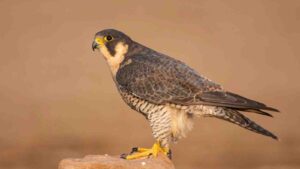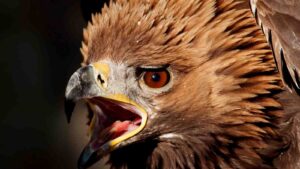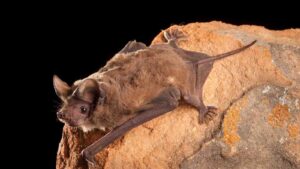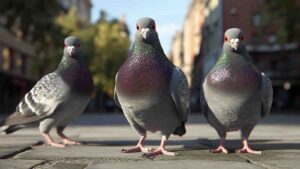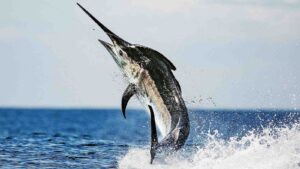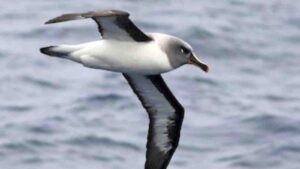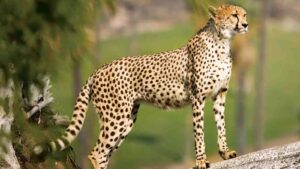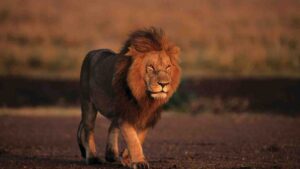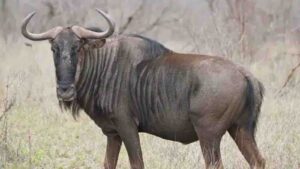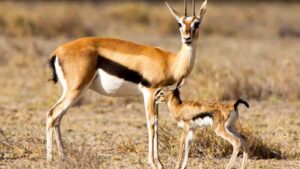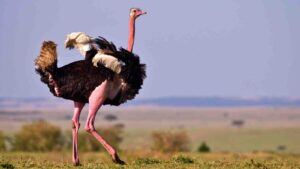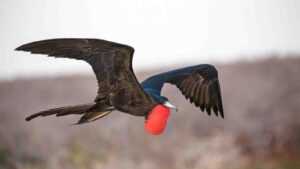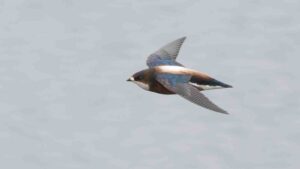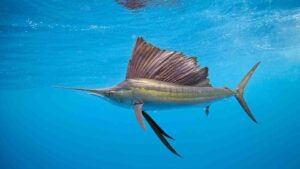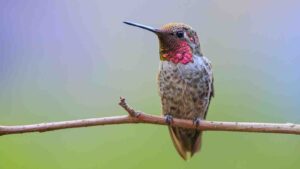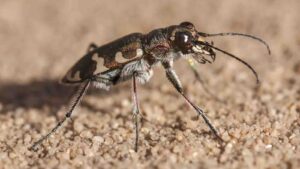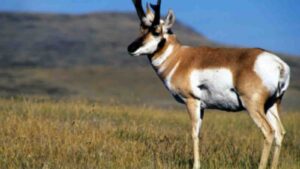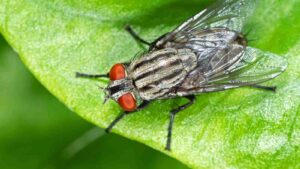Top 20 animals faster than cars
Summary
Ultimate fact presents Top 20 animals faster than cars. Animal Planet has its own world, where one important factor is the speed of the species. Don’t be scared if you see a cheetah is moving faster just right next to […]
Ultimate fact presents Top 20 animals faster than cars. Animal Planet has its own world, where one important factor is the speed of the species. Don’t be scared if you see a cheetah is moving faster just right next to your facing car. You will be surprised to know that there are varieties of animals that are faster than cars, not only on the land but also in the sea and sky. Here is the list of the Top 20 animals faster than cars.
Video: Top 20 animals faster than cars
Peregrine Falcon
Reaching speeds above 350 km/h, this widespread bird moves at a greater speed than any other animal. Peregrine falcons are widespread across the world, and there are four subspecies residents in Africa.
If we dived at 350 km/h, it would cause incredible damage to our lungs. The fastest animal on planet Earth has special nostrils, allowing it to breathe and regulate air pressure at the same time. These falcons also have third eyelids acting like windshield wipers to clear away dirt.
Golden Eagle
Magnificent in flight and deadly when diving, golden eagles can effortlessly change speed. They cruise at a mere 50 km/h but can quickly reach 240 km/h when diving for prey. While peregrine falcons weigh less than one kilogram, they are immense species combining speed with power.
These second-fastest animals can be glimpsed in Ethiopia’s Bale Mountains and the semi-desert Saharan areas of Morocco and Mauritania.
Video: Top 20 animals faster than cars
Mexican free-tailed bat
Nobody knows the exact Mexican free-tailed bat population. However, some bat colonies number over 20 million! Weighing just 12 grams, these tiny bats gather in huge concentrations across the Americas.
They migrate up and down the Pacific at speeds of 160 km/h. This makes them the fastest animal in the world on land. One place to watch them is Congress Avenue Bridge in Austin, Texas. 1.5 million Migrate there to feed on insects during the summer!
Pigeon
Hands up if you have never seen a common pigeon. In European capital cities, you can hardly move for these greedy animals. But away from Trafalgar Square, pigeons are one of the world’s fastest animals.
Not only are they fast. Pigeons are fast over a long distance. In one race, the winning pigeon was recorded flying at an average of 149 km/h, over 640 km! Pigeons may sometimes look fat and lazy, but they can do 149 km/h for more than four continuous hours!
Black marlin
A species of marlin found in tropical and subtropical areas of the Indian and Pacific Oceans. With a maximum published length of 4.65 m and a weight of 750 kg, it is one of the largest marlins and also one of the largest bony fish.
The quickest fish in the ocean, black marlin, is another animal faster than the car. They look dangerous, with their spear-like jaw and incredible dorsal fin. And they have been recorded swimming at 131 km/h.
Unfortunately, black marlin is hunted commercially and as fishing trophies.
Grey-headed albatross
Gyrfalcons and frigate birds are also almost among the fastest flying animals in the world. Like the peregrine falcon, they can dive at these incredible speeds, so they have the benefit of gravity. Grey-headed albatross have been recorded flying horizontally at 127 km/h for nine continuous hours, which is faster than a car.
A 2.2-meter wingspan helps them generate speed and then maintain a comfortably cruising tempo. And they need that speed because their habitat is the greatest and largest wilderness on the planet: Antarctica.
Cheetah
The fastest animal running upon planet Earth, the cheetah, can accelerate from 0-100 km/h in just three seconds. When hunting on the African savannah, they can hit 120 km/h. They travel eight meters in a single stride yet can only sustain 100 km/h for 30 seconds.
Cheetahs can be seen on an African safari yet are often elusive. Northern Botswana safaris and South Africa’s private reserves are good options. However, the African cheetah has lost 91% of its range, and their population is declining rapidly.
Lion
Lions are the actual Usain Bolt. They can hit 81 km/h, yet are completely exhausted after 200 meters. Wait, Usain Bolt never looks exhausted, does he? But most Olympic sprinters do.
Lionesses must get incredibly close to their prey before going in for the kill. They hunt with skill and stealth rather than just speed. One popular tactic is for half the pride to sprint full speed at their prey. This panics a herd and drives an individual into an ambush.
It wouldn’t be an African safari without encountering a lion.
Blue wildebeest
Wildebeests are born to run. Most famously, some 1.5 million of them make up the great wildebeest migration across Serengeti National Park and the Masai Mara. Bucking and rutting, they spend the mornings showing off speed and power. Even during the migration, wildebeest will be sprinting around purely for joy.
Their top speed is 80 km/h, a tad beneath that of their nemesis—the lion!
Read More: Largest Holes Swallowing the Earth
Thomson’s gazelle
You would think that 80 km/h and nimble zigzagging would be good enough for Thomson’s gazelle to avoid predators. Unfortunately, they are hunted by the fastest animal in Africa, the cheetah!
Sources vary as to their exact speed. Some have suggested that Thomson’s gazelle can run at 96 km/h, although 80 km/h is more realistic. You can see these “faster than car” species on a safari in the Serengeti, where almost half a million of them reside.
Ostrich
Comfortably the fastest animal on two legs, the ostrich runs at 72 km/h. And they seem to like running. Even on ostrich farms, you can see these flightless birds sprinting across the savannah with their strange gait.
Oudtshoorn in South Africa is thought to be home to 98% of the world’s ostriches, although these are farmed ostriches. Go here if you want to ride an ostrich; just note that clinging onto a wild bird at 72 km/h is a near-impossible task!
Quarter Horse
Another fastest land animal on earth, which is generally faster than its more famous thoroughbred relatives—at least over short distances like a quarter mile. And the differences can be pronounced: One study found that over various races of various distances, the quarter horse averaged 45 miles per hour, while the thoroughbred averaged only 35 mph—although the thoroughbred generally ran longer races. More impressively, the quarter horse was able to manage over 55 mph near the end of the race.
Frigate Bird
This spectacular avian makes the peregrine falcon look slow by comparison. It can reach speeds of up to 95 miles per hour—much faster than you drive on the highway. It has the largest wingspan to body weight ratio and can stay in the air for intensely long periods. Sometimes these birds do not touch down for over a week at a time.
White-throated needletail
Also known as needle-tailed swift or spine-tailed swift, is a large swift in the genus Hirundapus. It is reputed to reach speeds of up to 170 km/h in horizontal flight, but this is unverified because the methods used to measure its speed have not been published.
They build their nests in rock crevices in cliffs or hollow trees. They do not like to sit on the ground and spend most of their time in the air. They feed on small, flying insects like beetles, flies, bees, and moths.
The white-throated needletail is a migratory bird, breeding in Central Asia and southern Siberia and wintering south in the Indian Subcontinent, Southeast Asia, and Australia.
Sail Fish
What is the fastest sea animal? That honor goes to the sailfish, which can read speeds up to 68 miles per hour—again, possibly faster than you are used to driving on the highway. Can you imagine fish racing alongside your car and keeping up with you? That’s one fast sea animal. The characteristic sail is used when the fish is frightened in order to intimidate threatening animals. The rest of the time, it is kept folded up.
Sailfish are hunted by shortfin mako sharks, the fastest large predatory animal in the ocean. Incidentally, mako sharks can hit 50 km/h but can still chase down the sailfish. Great white sharks swim at just 40 km/h, which is as fast as an elephant can go.
Anna’s Hummingbird
This little critter can travel at 61 mph for short distances during mating dives. That fact alone is impressive, but this hummingbird is a good candidate for the fastest vertebrate by body lengths per second. According to a 2009 paper, it can reach speeds of 385 body lengths per second. By comparison, the space shuttle reentering the atmosphere travels at around 207 bl/s. For a blue whale to match this hummingbird’s relative speed, it would have to circle the entire planet in about an hour.
Australian tiger beetle
According to Rubin and his adviser Jonathan Wright, who is a professor of biology at Pomona College, the Australian tiger beetle tops out at 171 body lengths per second. That’s over 22 times the speed of former Olympic sprinter Michael Johnson.
Tiger beetles display an unusual form of pursuit in which they alternatively sprint quickly toward their prey, then stop and visually reorient. This may be because while running, the beetle is moving too fast for its visual system to accurately process images. To avoid obstacles while running, they hold their antennae rigidly and directly in front of them to mechanically sense their environment.
Pronghorn Antelope
It can easily outsprint most predators at speeds as high as 60 miles per hour. Interestingly enough, a pronghorn antelope is not actually an old-world antelope and is native to North America. Actual antelopes are one of the fastest land animals in the world as well, but not as fast as the pronghorn.
Also curious is the fact that the pronghorn is far faster than the predators that inhabit North America. This seems to indicate that it evolved its great speed at some point in the past under the threat of a now-extinct predator, perhaps the American cheetah.
The pronghorn has a number of special adaptations that allow it to function at high speeds, including cushioned, pointed toes to absorb shock and extra-large organs that assist with air intake.
Which animal seems the fastest to you? Don’t forget to let us know in the comment section!
Greyhound
There’s a reason why greyhound racing exists. The long and lean body of a greyhound allows it to extend its body and cover more ground. Since the rise in large-scale adoption of retired racing Greyhounds, the breed has seen a resurgence in popularity as a family pet. Only a little faster than the North African ostrich, greyhounds can reach a top speed of 43 mph. Greyhounds can be aloof and indifferent to strangers but are affectionate with those they come to know. They are generally very docile, lazy, easy-going, and calm.
Read More: Friendly Snakes You won’t believe exist
Flies
Horseflies currently sit at the top of the fastest-growing insect list. These stout flies, as small as a housefly or as large as a bumble bee, between 0.2 and 2.4 inches, are sometimes known as green-headed monsters. Their metallic or iridescent eyes meet dorsally in the male and are separate in the female. Horseflies can reach speeds of up to 145 kilometers per hour. Male horseflies are faster than their female counterparts. Some of his peers, however, feel that the methodology used allowed for erroneous conclusions.
American entomologist Charles Townsend claimed that Cephenemyia, known as deer botflies, could reach speeds of 1,287 km per hour. That’s faster than the speed of sound!
Which is the fastest animal? Do you know any other animal like this? Let us know in the comment section.
